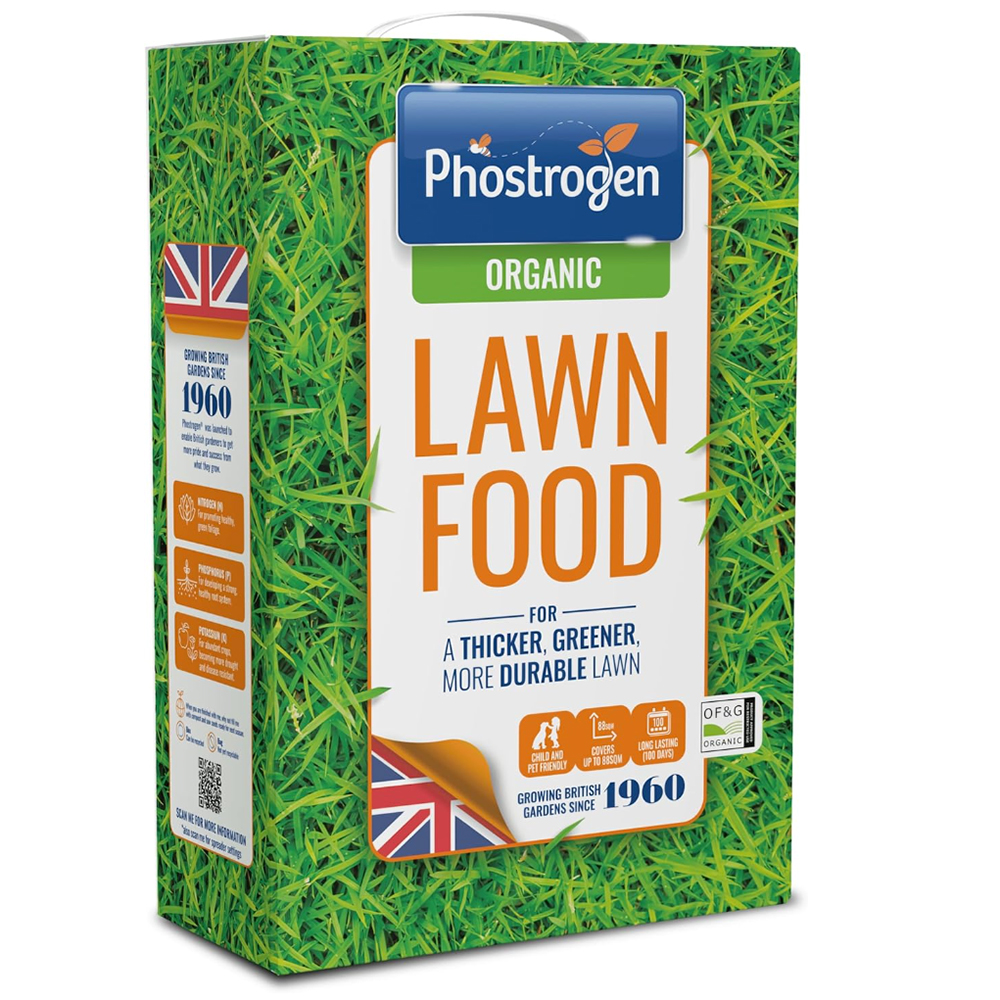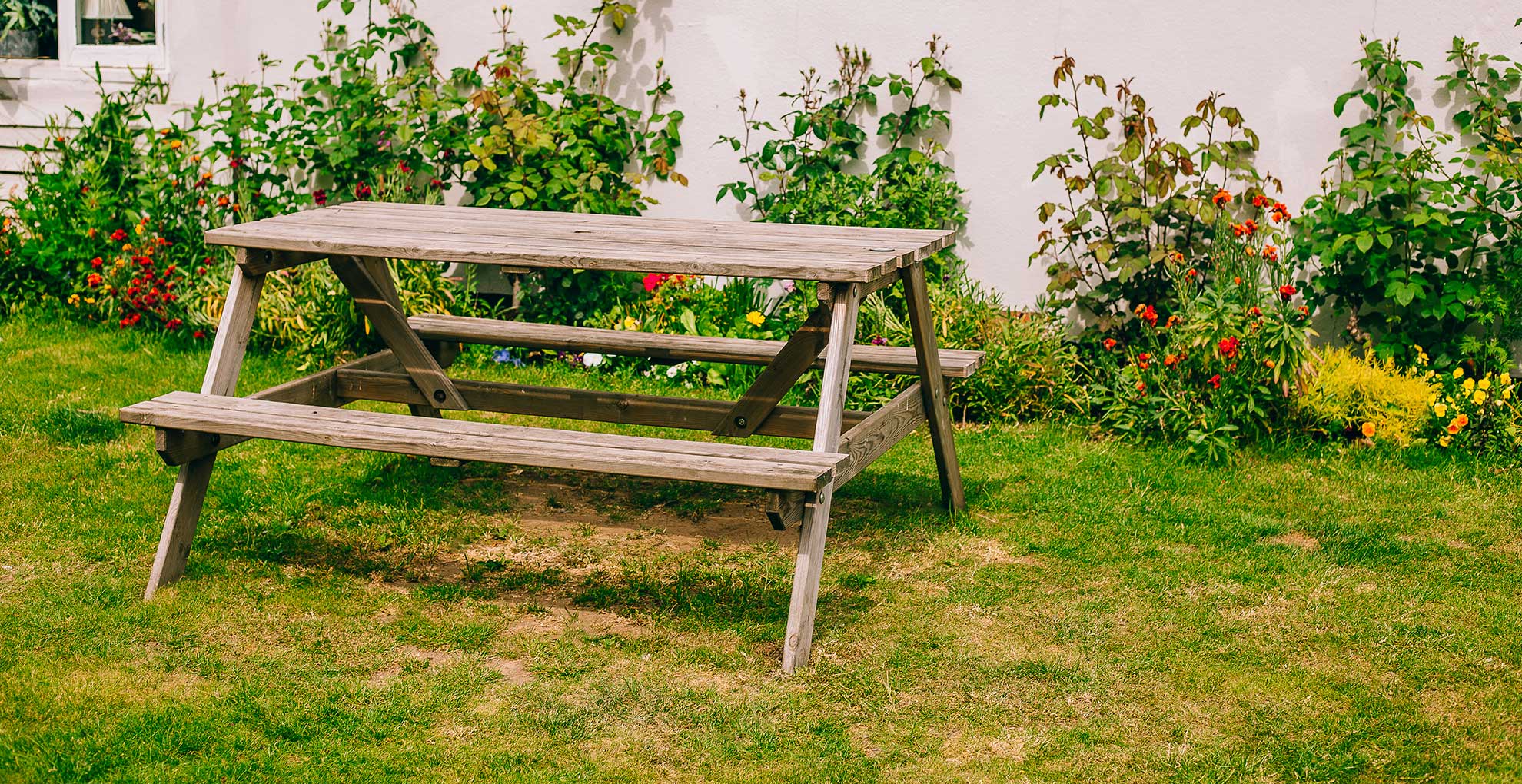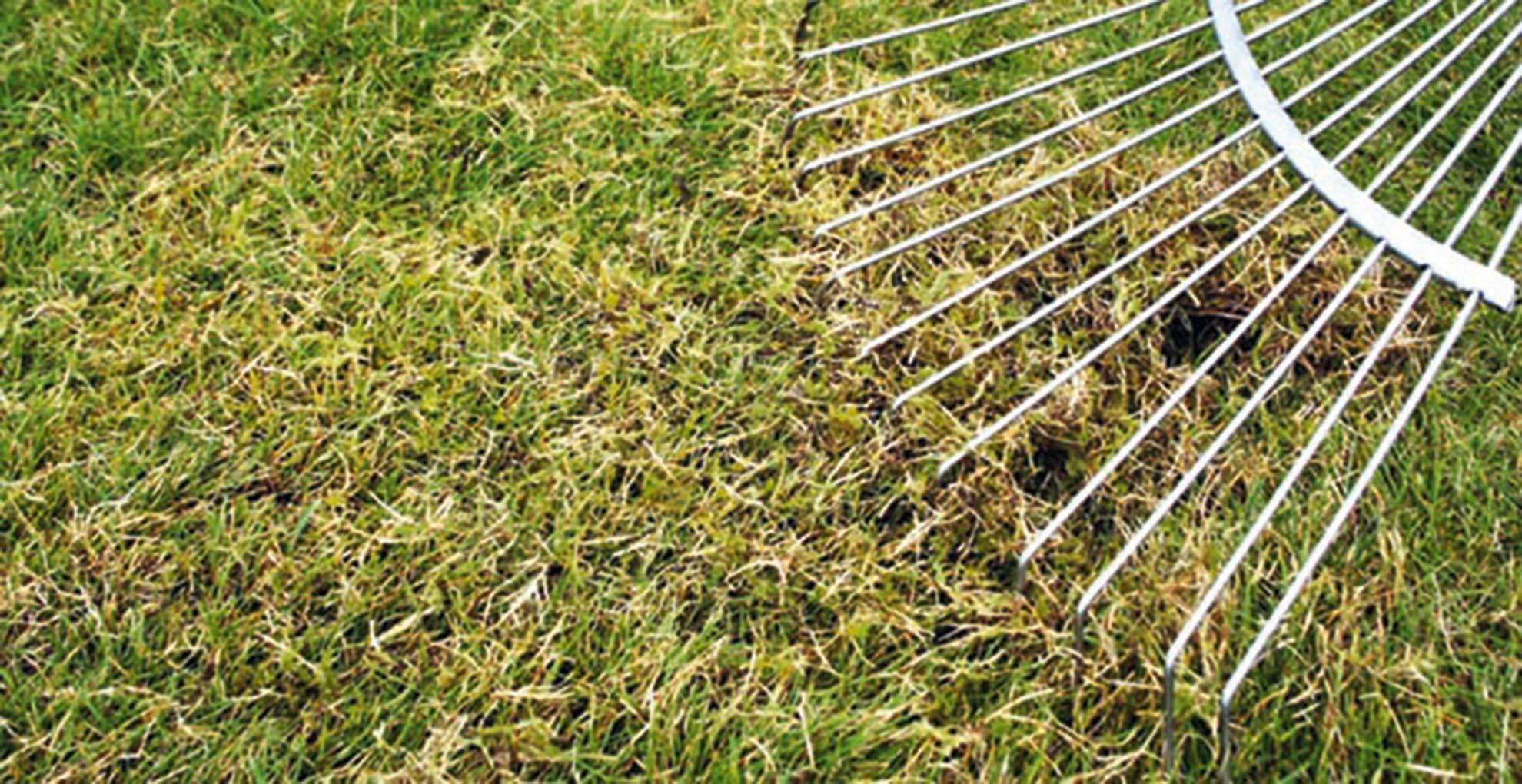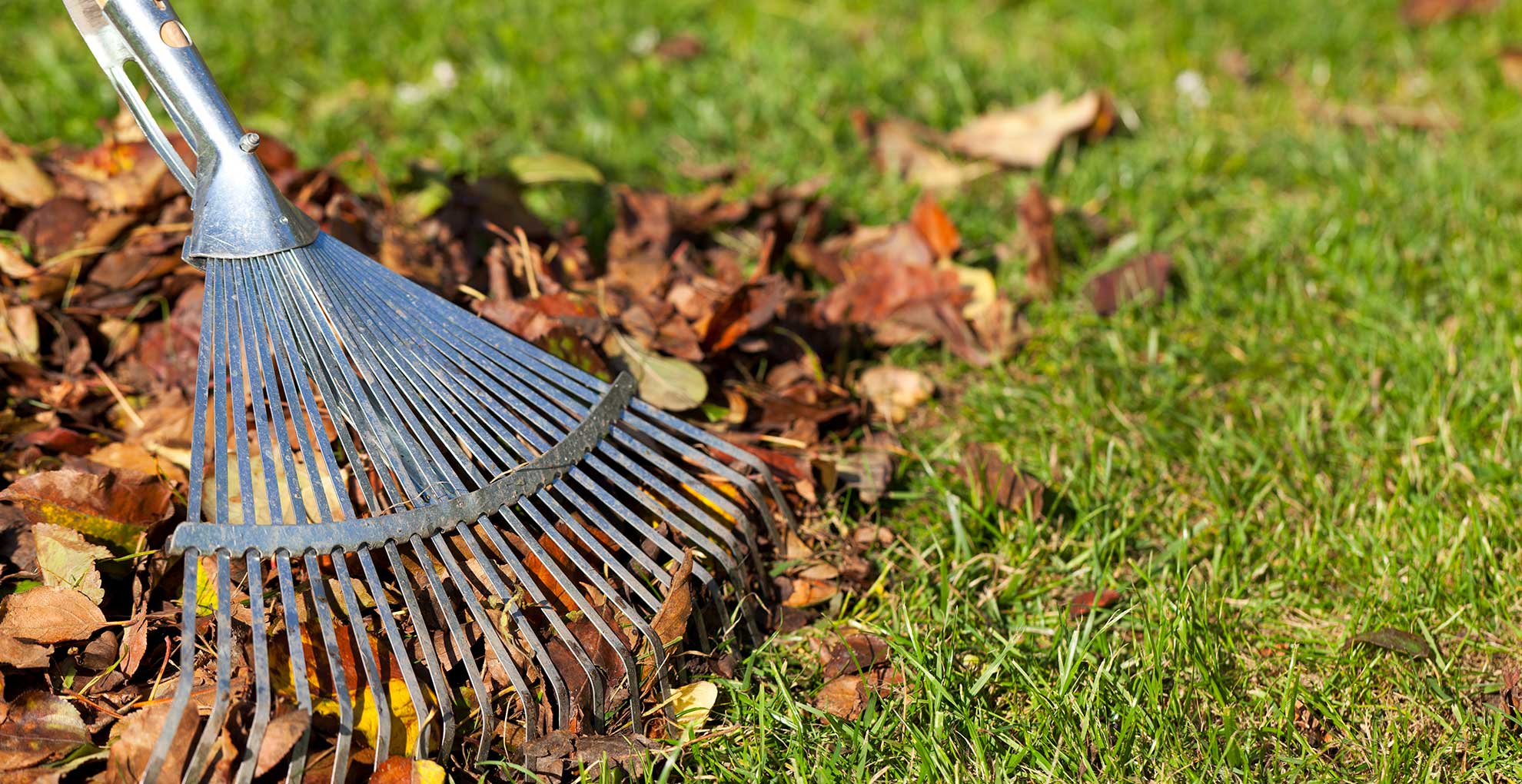15 common lawn care mistakes that experts warn are easy to make and guaranteed to damage your grass
If you want a flawless lawn take note of these lawn care mistakes which experts say are easy to make but highly avoidable


We like to think we all know the basics, however, it turns out there are common lawn care mistakes we're probably all making that could be jeopardising our efforts.
More than a mere patch of grass, the lawn is the heart of any garden and therefore needs to look its best to enhance the surrounding plants and garden trend-inspired landscaping.
But whoever said lawn care was easy? From mowing to sowing, scarifying to aerating lawns are high maintenance and require a lot of TLC throughout the seasons. Not to mention that there are easy lawn care mistakes to be made during every step of the process, which can compromise the appearance of the grass.
Luckily we've spoken to horticultural experts who reveal the most common lawn care mistakes, from misjudging how often you mow your lawn to planting grass seed under the wrong conditions.
15 lawn care mistakes and how to avoid them
Our team of gardening experts explains how to rectify or avoid the most common lawn care mistakes altogether.
1. Tending to core lawn care in the wrong conditions
With all lawn care being about timing this one can be the biggest mistake. Take for instance when to first cut grass after winter it's easy to assume that the first sign of sunshine in spring welcomes the perfect opportunity to mow the grass that has laid dormant during the winter months but it's not that simple. Same as with when to aerate or fertilise a lawn, the climate is more important than the date.
"Getting the timing right is the key to keeping your lawn healthy and ensuring that you are doing no unnecessary harm to it," says Chris McIlroy, a gardening expert at The Grass People.
Sign up to our free daily email for the latest royal and entertainment news, interesting opinion, expert advice on styling and beauty trends, and no-nonsense guides to the health and wellness questions you want answered.
"As a rule of thumb, we recommend waiting until temperatures are consistently above 8 degrees before you think about mowing your lawn. When temperatures are below 8 degrees, your grass is typically in a state of dormancy, where it grows a very small amount, so slowly, it’s almost unnoticeable."
The same goes for fertilizer, as Teri points out: "Fertiliser is best applied to a well-hydrated, actively growing lawn in the early morning or evening. Active growth depends on grass type. Cool-season lawns (like fescues, bluegrass, and ryegrass) begin actively growing when temps start hitting above 40-49 degrees F. Warm-season lawns begin growing when temps hold consistently above 60-69 degrees F."

Chris is the technical product lead and in-house lawn seed expert for The Grass People, a grass seed company that champions their expert lead advice and high-quality seed. His advice is focused on sowing, mowing, and maintaining a perfect lawn, and how to overcome any lawn issues homeowners face.
2. Mowing too uniformly

No matter how often you mow your lawn it can be more about how you mow that can damage the blades of the grass. While most gardeners strive for a beautifully striped lawn it turns out the act of only moving in precise straight lines could be detrimental to the growth of healthy grass.
"Varying your mowing pattern is good for your lawn over time as it means you’re not repeatedly forcing the grass to bend in one particular direction," explains Carlos Real, a lawn care expert, and managing director at TotalLawn.
"Instead, one week start at the top of your garden and finish at the bottom and alternate it the next time you mow. This will make the stripes look slightly different, and result in stronger and more resilient grass over time.”
3. Cutting grass too short
As well as the direction of your mowing another mistake can be the height at which you cut. "When cutting your lawn, the most common mistake many people make is cutting the grass too short," says Gemma Vincent, product manager at lawn mower specialists Hayter. "We advise not to cut more than one-third off at a time as a good rule of thumb."
Explaining why this mistake proves so costly, Gemma explains: "Cutting your grass any shorter than this, and you'll be damaging it, leaving your lawn susceptible to pests, heat stress, and disease."
“Mowing too short ends up scalping the lawn and doing more harm than good," adds Peter Chaloner, an expert at lawnmower manufacturer Cobra. "Most lawnmowers have an adjustable height level that raises the blades from the grass to prevent scalping, which can stress the grass."
Cutting the grass too short can strip the lawn of essential moisture and cause it to dry out: "whereas a higher cut will help stimulate grass growth and encourage the blades to thicken over time," explains Peter.
4. Blind seeding without testing PH levels
Soil PH levels are often overlooked but are crucial to plant health - including how your grass grows. You'll see different seeds and fertiliser options varied to suit the different types of soil, depending on it they are acidic or alkaline. Not knowing this can be a big mistake when treating your lawn.
"Most homeowners jump straight into planting grass, but a crucial first step is understanding your soil," says gardening expert Oliver Johnson at HomeAdviceGuide. "Testing its pH level is vital. Grass thrives in slightly acidic conditions, ideally between 6 and 6.5. Amending the soil with lime if it's too acidic can significantly improve your lawn's health."
Garden Tutor Soil pH Test Kit, £13.99 at Amazon
This easy-to-use kit makes checking your soil's PH levels a breeze. The fast and accurate soil test results show in 60 seconds at home, with enough test strips for 100 soil pH tests.
5. Treating a stressed lawn

When grass is visibly 'stressed' it's best to avoid carrying out any form of gardening chore – a more common summer lawn care mistake. It's best all around to give the grass time to recover, otherwise, you risk causing further trauma.
For example, don't try to feed or mow a scorched lawn. “Don’t apply fertilizer to drought or heat-stressed lawns," says Teri Valenzuela, natural science manager at lawn care specialists Sunday.
"If your lawn is experiencing heat or drought stress, lightly water the crown (the part just above the soil) to keep it alive, but don’t fertilize, stop mowing, and stay off of it until it starts greening up again."
6. Watering at incorrect times of the day
A common mistake we probably all make is watering the lawn at the wrong or least ideal time of the day. There's the temptation to water the grass during intense sunshine to relieve the lawn of the heat or at the end of the day after the sun has set, but both are actually detrimental to growing healthy grass.
"The best time to water the lawn is in the early morning as this allows the grass to absorb the water throughout the day," explains Jay Betts, a grass expert at lawn care specialist LawnStarter.
"When watering in the middle of a hot day, a good portion of the water will evaporate before reaching the roots not giving the grass the necessary water it needs to grow. And while watering in the evening might seem like a sound idea, it’s not advisable either as not having enough sunlight will allow the water to sit on the grass for too long which can lead to lawn diseases and fungus."
Consider the latest rainwater harvesting ideas to embrace a more sustainable gardening solution to watering your lawn.
7. Over watering

In addition to knowing when to water, it's important to know how much to water, because overwatering is another common lawn care mistake.
"With watering the lawn at the right time of the day also comes watering the grass just enough which leads to one of the other most common mistakes, overwatering the lawn," says Jay. "Grass only needs about an inch of water per week."
"The easiest way to know how much water your lawn is getting is by installing a small rain gauge however if you don’t want to do that, it’s recommended you have one to two days of watering the lawn per week and again you want to do this in the morning."
Tildenet Rain Gauge, £7.99 at Amazon
This simple rain gauge gadget measures sprinkler fall and rainfall to allow you to evaluate how much you really need to water it further.
8. Neglecting to fertilise when most needed
Feeding lawns can often be overlooked, with the assumption that water and sunlight are all a lawn needs – which can be true to a certain extent, but fertiliser delivers the extra nutrients your lawn needs for healthier grass.
"In most lawns, soil can provide all, if not most of the nutrients (like nitrogen) that your grass needs to grow," says Teri. "While ideally, your lawn has healthy soil and receives enough nutrients from the soil - that’s not always the case. In these instances, or when you’d like to ensure sustained growth, fertilising your lawn is a great supplemental addition to your lawn routine."
So how often should you fertilise your lawn? "It depends, but generally speaking 2-3 times per year depending on fertilizer preference and goals for your lawn," explains Teri. "If you use granular fertiliser, you may be limited to two applications per season. Whereas liquid fertiliser can be applied more frequently as it applies lower, targeted amounts of nutrients per application."

RRP: £10.99 | This water soluble solution is enough to cover 200 square metres and promises a'richer lawn in 5 days'

RRP: £38.50 | Using a fertiliser specially formulated for the season is a sure fire way to get the right nutrients into the soil at the most needed time.

RRP: £9 | Suitable for all lawn types this lawn food is certified for organic gardening y The Organic Farmers And Growers Association (OF&G)
9. Applying fertiliser unevenly

It may sound obvious, but it's also far too easy to do and can result in patchy, unpleasing results. “Apply fertiliser uniformly across your lawn to ensure even distribution of nutrients and even growth,” says Teri.
“Missing a few spots here or there likely won’t be noticeable, but you’ll be able to recognize over time the areas that you might be missing completely.”
10. Using weed killer
While a lawn full of weeds is not a welcome sight, nor too is a patchy lawn with dead patches caused by the application of weed killer – there are alternative ways to get rid of weeds in a lawn.
"Avoid any fertiliser products that contain herbicide or ‘weed killer’," says Teri. "These are traditionally called ‘weed and feeds’ and contain pesticides. Not only do these products require the user to spread pesticides across their lawn, they also can harm growing grass seed and beneficial insects, like pollinators."
Always check the product label to determine if you’re applying a fertiliser with herbicide properties.
11. Scarifying wet grass

Experts are all in agreement on whether you can scarify a wet lawn, and the answer is a resounding no. While it's possible to do the job on wet grass the experts would never recommend it because you run a greater risk of pulling up the roots due to softer soil conditions.
"It’s best to dethatch (Scarify) the grass when the soil is moist – not wet and not dry,' says Barry Galvin, an expert at lawn care service provider Lawn Starter. "We recommend watering your lawn thoroughly 2 days before dethatching."
12. Aerating too frequently
While aerating a lawn is a good practice it is only necessary at very specific times and actually how often you should aerate a lawn is far less than people think.
"Whilst it may seem like a good idea to aerate as often as possible, it can do more harm than good to you and your lawn," explains Chris. "Generally, aeration is a good practice to carry out every once in a while to improve drainage and alleviate compaction, but it shouldn’t become a regular practice in any garden."
"Try to confine spiking to compacted areas, and don’t do this too often. When using a garden fork, only do this once a year," suggests Chris. "If using a hollow-tine aerator, cut this down further to once every three years."
Experts recommend aerating your lawn only once a year, typically in the fall or spring when the grass is actively growing.
Gently pricking the surface to aid with watering and fertilising can be done a little more regularly but remember this method won’t solve deep compaction issues.
GRÜNTEK Lawn Aerator Shoes, unisize: £21.85 at Amazon
While you can employ a garden fork to do the job you can also make the task a whole lot easier with these spiked aeration shoes on Amazon. The adjustable footwear features 13 steel nails to help pierce your lawn.
13. Failing to rake away debris frequently enough

Leaving freshly cut grass remnants on top of the lawn straight after you mow is a good practice, according to experts, to reap the rewards of any lost nutrients that are still present in the discarded blades. However, what is not recommended by experts is to allow the dead matter to reside on the lawn for any length of time.
“Letting rotting leaves (and the like) build up on your lawn can damage the grass underneath," says Martin Seddon, development manager for Wilkinson Sword. "Keep your lawn free of debris by using a Lawn Rake."
We recommend this Wilkinson sword Adjustable Lawn Rake, £14.94 at Amazon.
"Also break up any thatch which may have accumulated on your lawn, by lightly raking across it. Concentrate on dead spots as your lawn starts to turn green again so that you can target areas that have been impacted by the cold of winter. In summer, don’t make the mistake of heavily raking as you can damage the delicate roots.”
14. Using lawns too soon after treating
Whether you're watering or feeding the grass there needs to be a rest period before you start using your lawn again – a big consideration if you're throwing a garden party or hosting a BBQ.
Allowing time for water or fertilizer to settle in ensures the nutrients are fully absorbed, rather than disturbed at the surface level by walking across the grass.
"Avoid activity on your lawn until the fertilizer has dried or has been properly watered in to ensure the grass absorbs the fertilizer properly and fertilizer is uniformly distributed," says Teri.
15. Conforming to traditional expectations

And finally, one of the biggest mistakes we can all make in this day and age is to conform to expectations. Who says the perfect lawn has to be a green, neat patch of grass, in fact, this year one of the biggest rewilding garden trends for 2024 is the idea of encouraging low-maintenance lawns.
“This year we’re encouraging people to ‘re-wild’ their gardens and use any patch of ground that they can to increase biodiversity, including lawns," explains Dr. Ana Attlee from Seedball. "Grow a mixture of wildflowers by scattering a lawn mix and cut out little patches of grass for the balls to grow, making sure to water them well.”
Scattering seeds at random welcomes a wild meadow feel for lawns, in place of neatly cut traditional grass. The mixture of buttercups, dandelions, White Clover, Birdsfoot Trefoil, Red Clover, and Common Knapweed introduces colour and life to modern lawns.

Tamara is a highly experienced homes and interiors journalist with a career spanning over 22 years. Now the Lifestyle Editor of womanandhome.com, she previously spent 18 years working with the style teams at Country Homes & Interiors and Ideal Home. With these award-winning interior teams, she gained a wealth of knowledge and honed her skills and passion for styling and writing about every aspect of lifestyle and interiors.
A true homes and interiors expert, Tamara has been an ambassador for leading interior brands on multiple occasions, including appearing on Matalan’s The Show and presenting at top interior trend forecasting events such as the Autumn Fair and Spring Fair.


